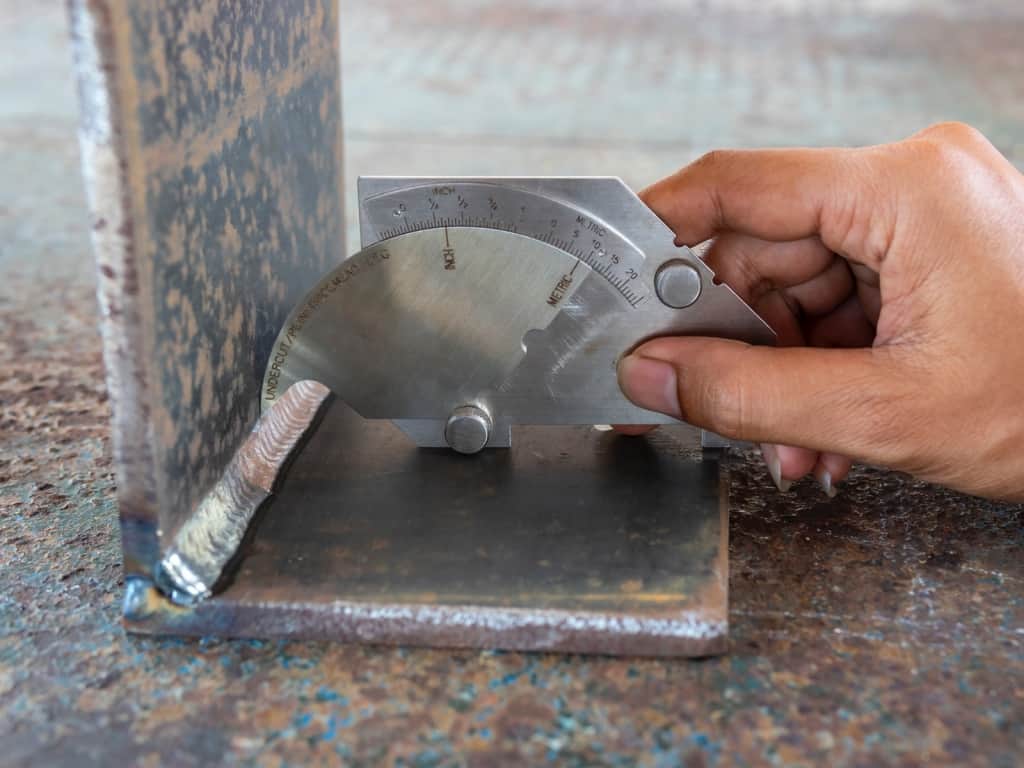Preventing Weld Undercut: Proven Methods Every Welder Must Know
Preventing Weld Undercut: Proven Methods Every Welder Must Know
Blog Article
A Comprehensive Overview to Identifying, Preventing, and Fixing Undercut Welding Issues in Your Welding Tasks
In the realm of welding, experiencing undercut problems is a common difficulty that can jeopardize the architectural stability and general quality of your welding projects. Comprehending the source behind undercut welding, having the ability to precisely detect it in your welds, and applying reliable preventative steps are vital abilities for any kind of welder. Furthermore, having the expertise and strategies to rectify undercut troubles when they do occur can make a substantial distinction in the final result of your welding undertakings. Stay tuned as we explore the essential components of identifying, preventing, and fixing undercut welding issues, providing you with important insights and approaches to raise your welding abilities to the next degree.
Typical Reasons For Undercut Welding
Undercut welding, a typical concern in welding processes, can be brought on by various elements that require to be carefully determined and dealt with to make certain the honesty of the weld joint. Among the key reasons of undercut welding is extreme warm input. When the welding criteria, such as voltage, present, or take a trip speed, are not effectively established, an extreme amount of heat can be created. This excess heat causes the melting and succeeding removal of the base material along the sides of the weld joint, producing a groove referred to as undercut.
An additional typical reason of undercut welding is improper welding technique. Identifying these origin creates and implementing rehabilitative procedures is necessary in preventing and rectifying undercut welding troubles in welding jobs.
Identifying Undercut in Welds

To recognize undercut accurately, correct illumination and magnifying devices are necessary to examine the weld joint thoroughly. Making use of devices such as a welding gauge or a magnifying glass can assist in identifying also the tiniest undercut flaws. Furthermore, running a finger or a finger nail along the weld joint can occasionally reveal undercut, as the surface might really feel unequal or have a dip where the undercut exists.
Precautionary Procedures for Undercut
Having a deep understanding of the root causes of undercut in welds enables the execution of effective safety nets to keep weld high quality and honesty. One essential safety net is proper weld joint prep work. Making sure that the edges are tidy, without impurities, and effectively Source beveled can considerably decrease the possibility of undercut (Preventing weld undercut). Furthermore, choosing the ideal welding criteria, such as voltage, present, and travel rate, is important. These setups must be maximized to prevent excessive heat input, which can cause damage development.

Methods for Taking Care Of Undercut

To address undercut concerns effectively, welders can use specific strategies focused on remedying the flaw and recovering the stability of the weld joint. One method is to adjust the welding criteria, such as the voltage, present, and take a trip rate, to guarantee appropriate heat input and combination. Boosting the welding present or lowering the traveling speed can help complete the undercut. Additionally, altering the welding technique from a press to a drag or the other way around can additionally aid reduce undercut.
Another technique is to utilize a weaving activity while welding to guarantee proper sidewall blend and fill in the undercut. By oscillating the welding arc back and forth within the weld joint, the welder can transfer more filler product into the undercut locations, properly eliminating the problem.
Furthermore, grinding out the undercut and rewelding the joint can be a feasible solution for more extreme undercut concerns - Preventing weld undercut. This process entails eliminating the undercut area, preparing the base steel, and after that rewelding the joint with appropriate welding specifications and techniques to stop undercut from repeating

Expert Tips for Staying Clear Of Undercut
Making use of appropriate welding methods and maintaining control over essential welding criteria are important methods for welders aiming to protect against undercut in their weld joints. In addition, picking the suitable welding procedure and filler steel for the specific application can help prevent undercut. Keeping a consistent travel speed during the welding process is another essential tip to avoid undercut.
Conclusion
Finally, determining, stopping, and repairing undercut welding problems in your welding tasks is important for making certain resilient and strong welds. Preventing weld undercut. By comprehending the typical reasons for undercut, being able to identify it in welds, implementing safety nets, and making use of appropriate techniques for dealing with undercut, you can prevent prospective concerns and produce high-quality welds. Complying with expert pointers for avoiding undercut can assist you boost your welding abilities and generate much better outcomes in your projects
Undercut welding, an usual issue in welding procedures, can be created by different elements that need to be carefully identified and Find Out More resolved to make certain the integrity of the weld joint. Furthermore, running a finger or a fingernail along the weld joint can in some cases disclose undercut, as the surface area may really feel irregular or have a dip where the undercut exists.
Using appropriate welding techniques and preserving control over vital welding parameters are essential techniques for welders intending to protect against undercut in their weld joints.In verdict, identifying, protecting against, and fixing undercut welding problems in your welding projects is essential for guaranteeing solid and sturdy welds. By recognizing the typical causes of undercut, being able to recognize it in welds, implementing preventive steps, and using appropriate strategies for fixing undercut, you can prevent possible problems and develop top notch welds.
Report this page